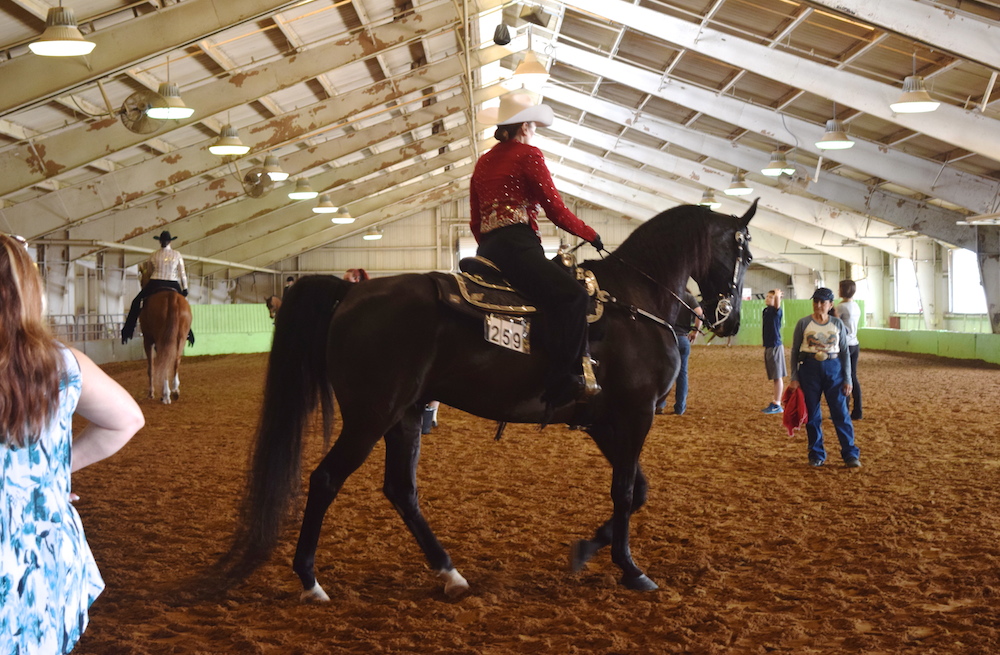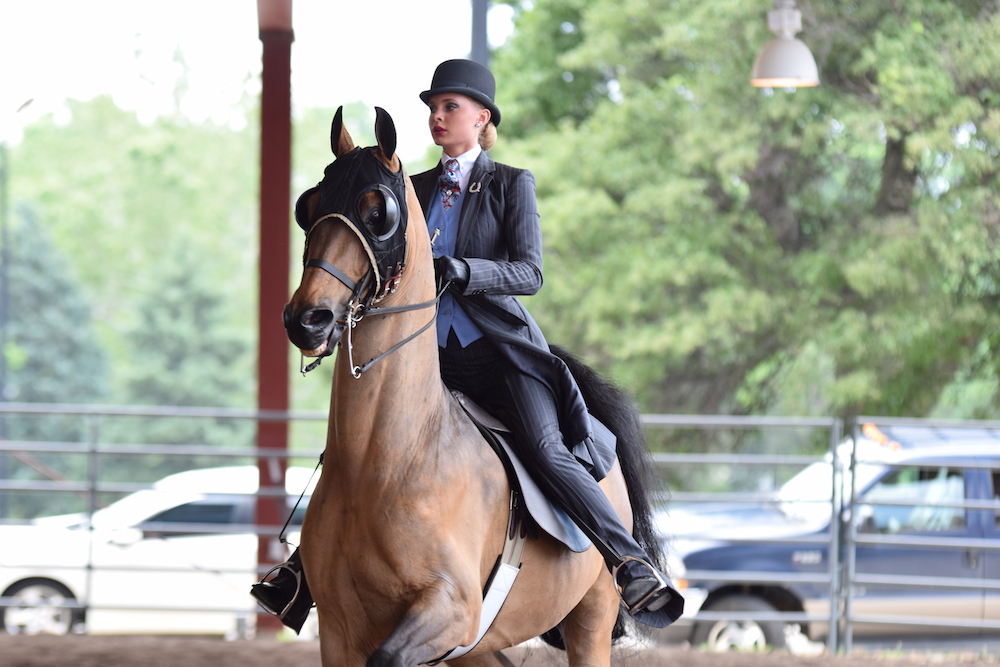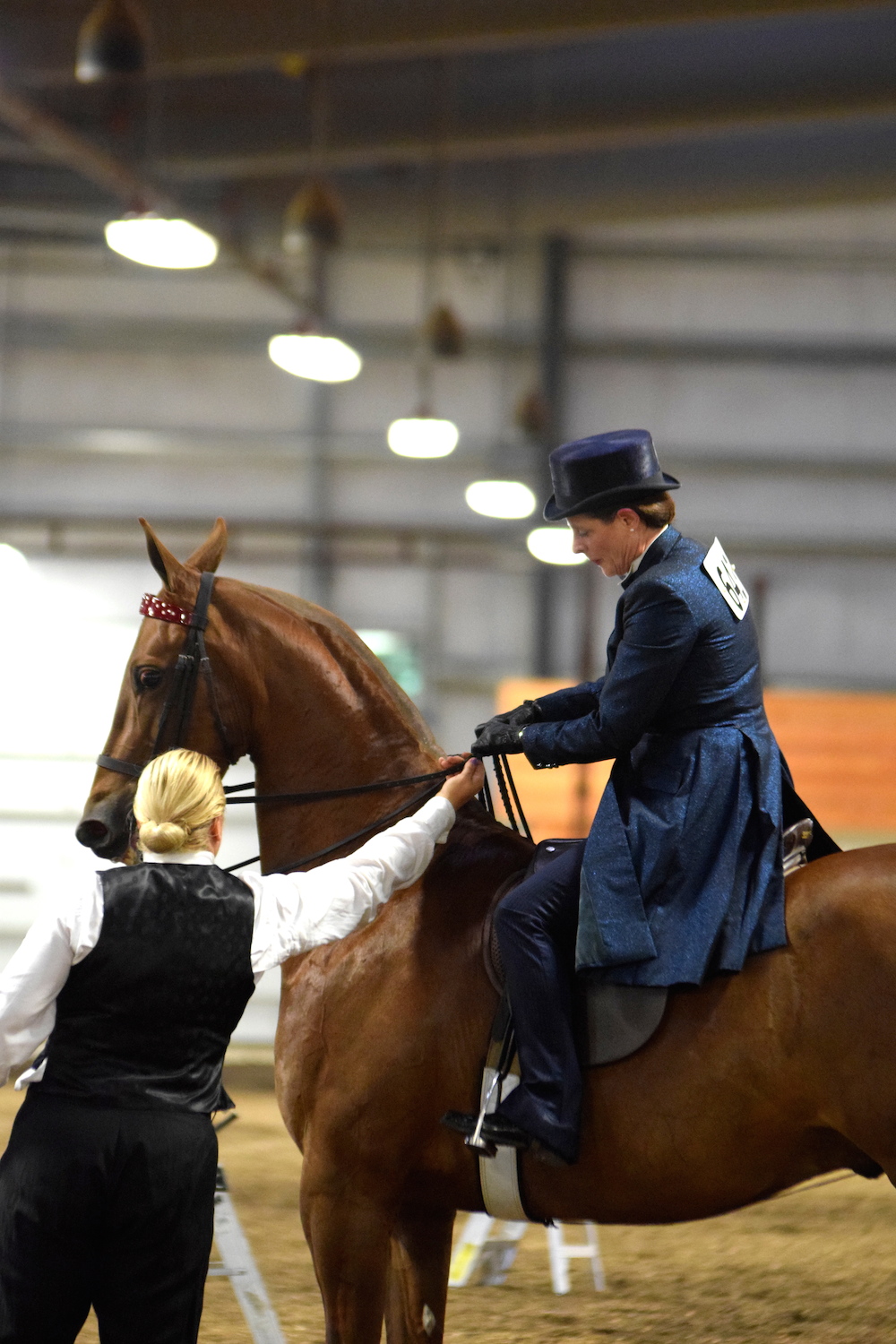
“My trainer was trying to teach me something to do with flying lead changes,” Janet said. “I love him dearly; he was great. But I remember thinking, ‘really, now?’”
Janet’s childhood trainer is far from the only trainer to try and teach a rider a new skill at a horse show, and though it’s not always as high-stakes as Madison Square Garden, this practice can adversely affect a rider’s performance at any show. While good communication can sometimes lessen the stress of being asked to learn a new skill in such a pressurized setting, the best tactic is to avoid this extra stress entirely, through foresight and proper preparation.
Warm up rings are small spaces filled with big distractions, with horses going at all gaits in every direction, multiple trainers shouting instructions, and the pressure of the upcoming class hanging heavy in the air.
“Common sense kind of suggests that that’s not the time to add something new to the plate,” Janet said. “They’re at a horse show so they’re nervous, and when people are nervous they don’t take in information and retain it well. They’re not primed for learning at that moment. The idea of adding something new, which requires a lot more mental energy, seems to me to be not particularly productive.”
It also adds an unnecessary layer of anxiety and pressure during a time when trainers are trying to keep their riders calm.

Janet believes that trainers often fall into this trap due to a sense of urgency, realizing, after they look around the warm up ring, that their rider has a chance to win the class if they just nail this one thing.
“All of a sudden a trainer decides to fine-tune something, thinking maybe it will give the rider an extra advantage,” Janet said. “The risk is that, because it’s at the last minute, it becomes a distracting focal point."
Utoft Stables trainers Mark and Toni Utoft agree it is not a productive strategy for their students, and do their best to avoid putting that kind of pressure on their riders.
“They have a hard time even remembering the program for that horse, so we're out there reiterating that,” Toni said. “They get in there, and their right is their left and left is their right. As far as really teaching them, at that point it's going to go over their head. You have to separate what you do at home and what you do at the show.”
However, sometimes trainers have, or feel like they have, no other choice. Though Mark said it has to “be a pretty specific case,” even the Utofts have occasionally felt like making a change in the warm-up ring was the lesser of two evils.
Sometimes the change involves simple adaptation.
“If there are twenty horses in the warm-up ring and we typically warm up second direction but all other horses are going the other way, that's adapting,” Mark said.

But some changes can be bigger and require learning a new skill.
“Let’s say you've always had a really game horse, and for some reason he's going slowly,” Mark said. “That rider has never had to cluck to the horse, but you have to learn to ride the horse you have that day.”
If a trainer feels they have no other choice but to introduce a new skill in the warm-up, Janet suggests making it more of a conversation.
“There is something I’d like to work on with you. I know you’re going in the ring soon, but I think this is important for you to practice. Do you feel you can handle this now?” is a good way to phrase the request.
“Then it becomes collaboration, not a trainer barking instructions at a rider that’s frozen up,” Janet said. “Because then they lose confidence in everything, not just the new skill. You want your rider walking in that ring like they own the world.”
Toni has used this tactic a few times in the past.
“You basically just try to keep them calm about it,” she said. “It's hard because we get nervous too, but you have to try to stay relaxed. Explain to them why their horse is doing what they're doing, and what they need to do because of it.”
She also suggests getting the rider to repeat the instructions back to you.
“If they can repeat it back to you, then you know they understood it,” she said.
It is also important to watch a rider’s body language closely during this process. Even if a rider feels like they can’t handle the new information, chances are they aren’t going to speak up verbally.
“They really feel stuck in that situation,” Janet said. “They don’t want to say, ‘I can’t handle this right now, I can’t do it, I’m already on overload.’ They try and accommodate the instruction, and the trainer gets angry or frustrated or disappointed in them, and it makes them shrink up even more.”



